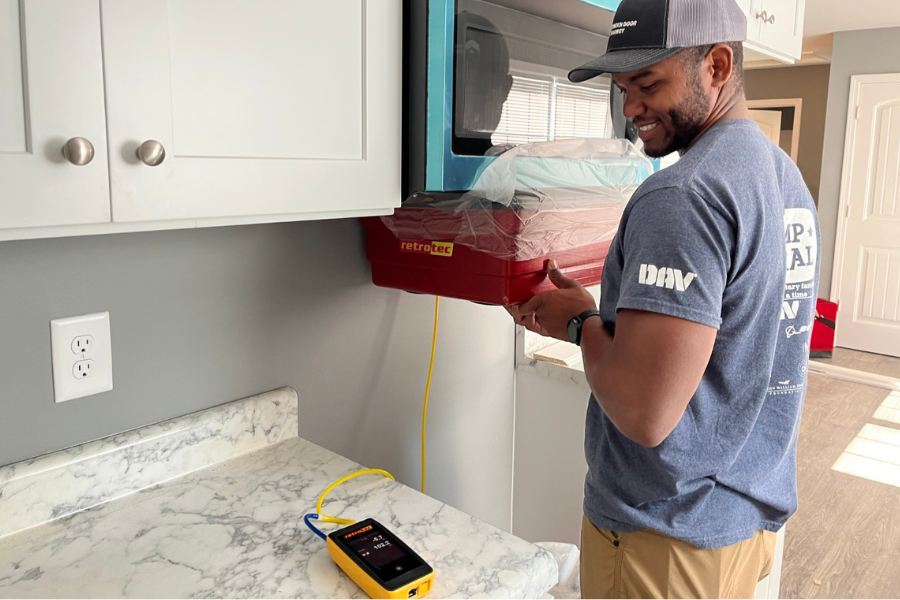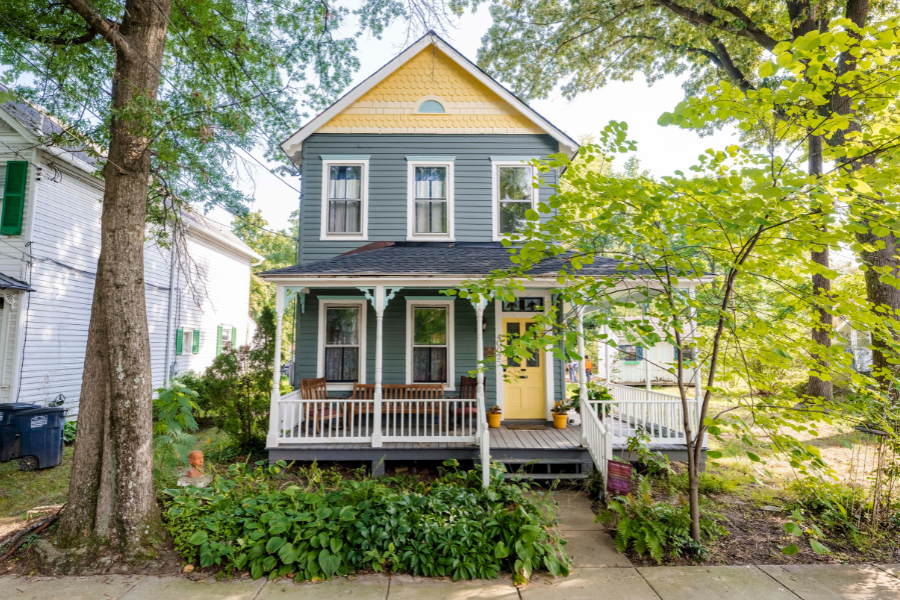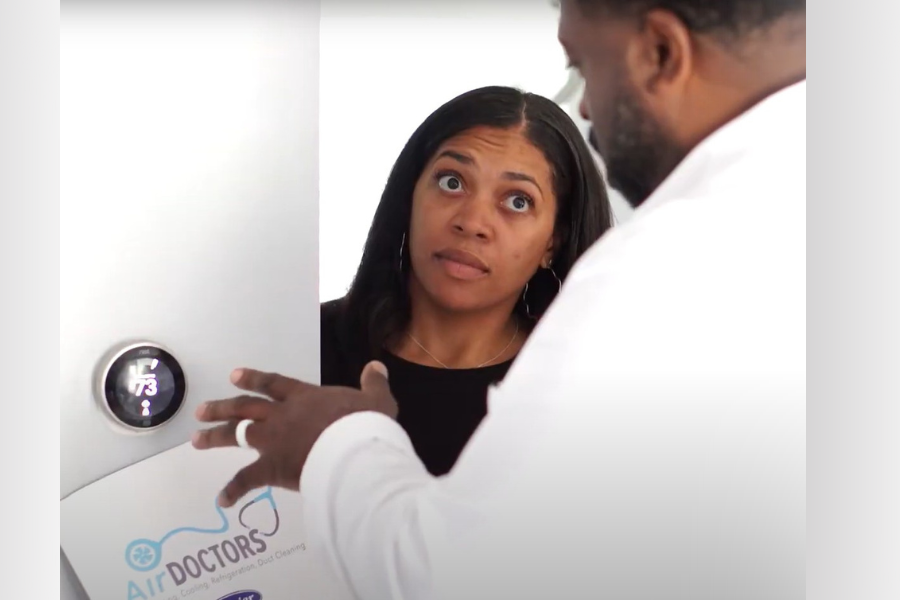Feb 23, 2021
Reducing COVID-19 Transmission in Homes
How to reduce the transmission of COVID-19 in a house without sacrificing energy efficiency.
By: Iain Walker, Paul Francisco, and Eric Werling

Owners and renters all over the world are still being encouraged to stay home as much as possible to mitigate the spread of the SARS CoV-2 virus and the COVID-19 disease. It is prudent to take reasonable precautions at home to reduce risks during the pandemic because most COVID-19 transmission happens in the home. This is particularly true for households with infected or sensitive members. Furthermore, because people infected with COVID-19 can be asymptomatic you may have an infected person in your home for several days before you know it.
The evidence to date shows that you get a COVID-19 infection by breathing in the SARS-CoV-2 virus in droplets emitted by an infected person. The closer you are to an infected person the more droplets there are in the air for you to breathe. The advice to keep a physical distance of 6 feet, or 2 meters, is therefore very helpful to reduce the risk of infection. However, beyond this separation distance there is still considerable risk due to airborne particles if you are sharing an indoor space.
This article is based on recommendations from the America Society of Heating, Refrigeration and Air-conditioning Engineers: ASHRAE. ASHRAE is responsible for the U.S. Indoor Air Quality (IAQ) standards and its membership includes leading IAQ experts from all over the world. Backed by a growing body of research on airborne transmission of the SARS-CoV-2 virus that leads to COVID-19, ASHRAE has published guidance for residential buildings to organize isolation spaces in homes and suggesting options for using the home’s heating, ventilating and air-conditioning (HVAC) equipment and systems to reduce potential risks of virus transmission through the air.
In addition, ASHRAE recently updated the ASHRAE Position Document on Infectious Aerosols. The position document now states: “Transmission of SARS-CoV-2 through the air is sufficiently likely that airborne exposure to the virus should be controlled. Changes to building operations, including the operation of heating, ventilating, and air-conditioning systems, can reduce airborne exposures.”
What Can Homeowners and Occupants Do to Reduce their Risk of Exposure?
There are three main principles that can be applied to reduce the risk of airborne transmission in homes. They have been used for many years in healthcare/hospital environments and can be adapted to other buildings.
Isolate: Isolate infected or higher-risk people from the rest of the household and exhaust air to outside from contaminated rooms. Control the air flow direction in your home: from uncontaminated rooms to contaminated rooms to outside.
Dilute: More ventilation lowers concentrations – reduces amount of virus entering your body. Increasing ventilation is usually accomplished by increasing mechanical ventilation air flows or increasing air flow due to natural effects by opening windows.
Filter: Removing the particles carrying the virus from the air in the building. This is usually accomplished using mechanical air filtration systems.
General guidance you can take to follow these principles is outlined in Table 1. The first column of Table 1 suggests actions that can be taken immediately in many homes. The second column provides details of how to accomplish those actions, depending on the types of HVAC equipment and systems installed in the home. The third column lists additional actions that could be taken later, to improve the capability of the home to provide additional protections.
| Do Now | Plan to Do Later | |
| Increase outdoor air ventilation, but do not sacrifice thermal comfort of increase ventilation when high polluting events occur, such as wildfires | 1. Open windows during favorable outdoor conditions. 2. If you know you have a heat recovery ventilator (HRV or ERV) or another ventilation system installed in your house, ensure that it is on. The most common types are exhaust fans located in a laundry room or bathroom or supply systems that operate on a controller connected to the central heating and cooling system. 3. Run one or more quiet bath or kitchen exhaust fans continuously (so long as they are vented outside). In a home with natural draft combustion appliances, ensure that these appliances draft properly. If your HVAC system has an economizer, use it as much as possible while maintining acceptable indoor temperature and humidity conditions. | If you do not have a ventilation system, hire a qualified contractor to install one*. The ventilation should comply with ASHRAE Standard 62.2 at a minimum. |
| Use high efficiency air filtration | 1. If you have a high efficiency air filter (MERV 13 or better **) in your central heating and cooling system, operat the thermostat in “FAN ON” mode (low speed if possible) to increase filtration rate, or use a system cycler if you have one installed. It is not recommended to run on central AC continuously in warm-humid weather. 2. If you do not have a high efficiency filter in your central heating and cooling system, you may use room air cleaners with high efficiency filters. Follow EPA guidance for selection and use***. | 1. Install a better filter in your central heating and cooling system. If your filter slot is 1-inch or less, do not exceed MERV 13. or you may hire a qualified HVAC contractor to install a 2-inch or greater filter system. 2. When replacing your filter during epidemic episodes, use a mask and gloves and put the old filter in a plastic disposable bag immediately upon removal. |
| Avoid overly dry air | If you have very dry indoor air, use a central humidifier or a room huidifier in the bedrooms of at-risk occupants. Follow manufacturers’ instructions for proper humidifier maintenance to prevent mold growth. | Hire a qualified home performance qualifier to air-seal your house****. This will help reduce drafts, improve comfort, save energy, and prevent overly dry conditions in your home. |
| Prevent sewer gases from contaminating your home | 1. Run water in each sink, tub, drain and shower and flush unused toilets to fill all plumbing traps and prevent sewer gas entry. 2. When using the toilet, turn on exhaust fan for several minutes and close the lid before flushing. |
Bath Exhaust Fan installation guidance: https://basc.pnnl.gov/home-improvement-expert/checklists/bathroom-exhaust-fan
Kitchen Exhaust Fan installation guidance: https://basc.pnnl.gov/home-improvement-expert/checklists/kitchen-exhaust-fan
**FPR 10 and MPR 1500 are comparable to MERV 13
***EPA air cleaner guidance: https://www.epa.gov/indoor-air-quality-iaq/air-cleaners-and-air-filters-home-0
**** Home air sealing guidance: https://basc.pnnl.gov/home-improvement-expert/checklists/home-air-sealing
Table 2 provides guidance on creating an isolation space for an infected person.
| Set up appropriate area for isolation space | 1. When possible, the isolation space should have its own bathroom. 2. Independent heating and cooling is recommended. A portable room heater, portable air conditioner, or window air conditioner may be used if necessary. 3. If there is a central forced-air system that would mix air between the household and the isolation space, seal these grilles in the isolation space (for example, with tape or magnetic covers). |
| Operate exhaust fan to depressurize the isolation space | 1. Separate exhaust ventilation should be provided in the isolation space. 2. If the room has a bathroom with a fan, turn it on and heave doors open between the bathroom and isolation room. 3. If possible, install a fan in a window and make sure it draws air from the room and blows it outside. 4. Do not continuously operate exhaust fans taht are outside the isolation space unles required to provide minimum ventilation rates. 5. Minimize use of openable windows elsewhere in the home. |
Table 3 provides guidance for creating a protected space for sensitive individuals.
| Set up appropriate area for protected space | 1. When possible, the protected space should have its own bathroom. 2. Independent heating and cooling is recommended. A portable room heater, window air conditioner, or portable air conditioner may be necessary. 3. If there is a forced-air system that would mix air between the household and the protected space, seal the supply and return grilles that are in the protected space (for example, with tape or magnetic covers). 4. Use a high efficiency room air cleaner in the protected space and follow EPA Guidance for selection and use. |
| Operare supply fan to pressurize the protected space | Seperate fresh are ventilation should be provided in the protected space: 1. If the room already has a window air conditioner installed, use it in “outdoor supply” mode. 2. Otherwise install a window fan and ensure it draws outside air into the protected space. Window fans with air filters are preferred. 3. If the protected space includes a bathroom with an exhaust fan, that fan should only run when the bathroom is in use. 4. Continuously operate exhaust fans in common spaces/remainder of house. In a home with natural draft gas appliances, do not run all exhaust fans in your home at the same time unless your home has been tested by a home performance contractor to be safe under these operating conditions. |
Items of Note
It is important to note that in cases where an isolation room is created, it may be necessary to provide alternate sources of heating or cooling to maintain comfort.
Finally, it is important to note that this article is providing guidance. These actions do not guarantee any outcome—they simply reduce the risk of infection. Also, it is not necessary to follow all the guidance perfectly. Some recommendations may be difficult to follow in some homes. Instead, focus on doing the best you can in your home and in the homes of your clients in these difficult times.





